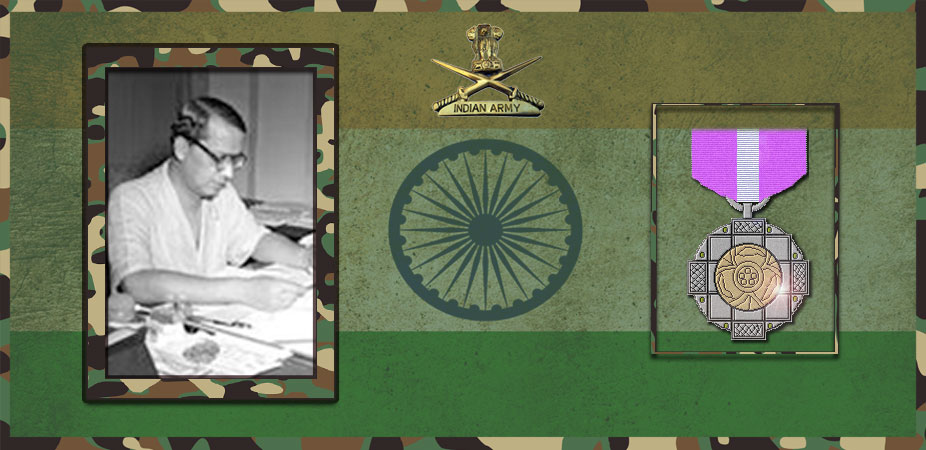Let's salute to our Indian Army together, We are proud to be Indian.
Let's salute to our Indian Army together, We are proud to be Indian.

Sukumar Sen (1899–1961) was an Indian civil servant who was the first Chief Election Commissioner of India, serving from 21 March 1950 to 19 December 1958. Under his leadership, the Election Commission successfully administered and oversaw independent India’s first two general elections, in 1951–52 and in 1957. He also served as first Chief Election Commissioner in Sudan.
Sen was the older brother of the more famous Ashoke Kumar Sen (1913–1996), Union Law Minister and a noted Indian barrister. Another brother was Amiya Kumar Sen, an eminent doctor, who was the last man to see Rabindranath Tagore alive.
Sen was born in 1899 in Bengali Vaidya-Brahmin family. He was the elder or eldest son of a district magistrate. He was educated at Presidency College, Kolkata and at the University of London. He was awarded a gold medal in Mathematics at the latter. In 1921, Sen joined the Indian Civil Service, and served in various districts as an ICS officer and as a judge. In 1947, he was appointed Chief Secretary of West Bengal, the senior-most rank that an ICS officer could attain in any state in British India. He was still serving in that capacity when he was sent on deputation as chief election commissioner. He was among the first recipients of the civilian honour of Padma Bhushan.
Historian Ramachandra Guha wrote of Sukumar Sen in The Hindu in 2002, on the 50th anniversary of independent India’s first general election
Nehru’s haste [in wanting India’s first general election] was understandable, but it was viewed with some alarm by the man who had to make the election possible, a man who is an unsung hero of Indian democracy. It is a pity we know so little about Sukumar Sen. He left no memoirs and, it appears, no papers either.
It was perhaps the mathematician in Sen, which made him ask the prime minister to wait. No officer of State, certainly no Indian official, has ever had such a stupendous task placed in front of him. Consider, first of all, the size of the electorate: 176 million Indians aged 21 or more, of whom about 85 per cent could not read or write. Each voter had to be identified, named and registered. This registration of voters was merely the first step. For how did one design party symbols, ballot papers and ballot boxes for a mostly unlettered electorate? Then, polling stations had to be built and properly spaced out, and honest and efficient polling officers recruited. Voting has to be as transparent as possible, to allow for the fair play of the multiplicity of parties that would contest. Moreover, with the general election would take place elections to the State Assemblies. Working with Sukumar Sen in this regard were the election commissioners of the different provinces, also I.C.S. men.
Tinker and Walker write that Sukumar Sen was aided by two Regional Election Commissioners plus one Chief Election Officer for each state.
The ability of India’s first political leaders to refrain from interfering with the machinery, as well as their decision to retain the Indian Civil Service (renamed the Indian Administrative Service with a few minor changes) gave Sen and his colleagues the freedom to adapt the machinery used by the British in the first Indian elections for the purposes of a general election. Niaz comments
Though not always successful, Nehru took it upon himself to shield the higher bureaucracy against any arbitrary interference and allowed it to operate autonomously.
This approach paid handsome dividends. Sukumar Sen and his colleagues in the IAS developed and adapted the election machinery inherited from the British Empire in India in preparation for elections on the basis of universal adult franchise.
With their positions secure and their political master sufficiently enlightened to understand when to stop engaging in politics, a hierarchy of IAS officers employed at the central, provincial, and district levels in coordination with the police and village watchmen administered the largest exercises in the history of electoral democracy. The autonomy and integrity of the IAS was a crucial element in motivating opposition parties to participate in the elections and thus contributed to the credibility of the democratic exercise.
Sen was the first Vice-Chancellor of Burdwan University, which started on 15 June 1960. Uday Chand Mahtab and the then Chief Minister of West Bengal, Dr. Bidhan Chandra Roy, facilitated the establishment of this university. As a mark of respect and to perpetuate his memory the road leading from G.T. Road to Golapbagh, Burdwan has been named after him as Sukumar Sen Road.